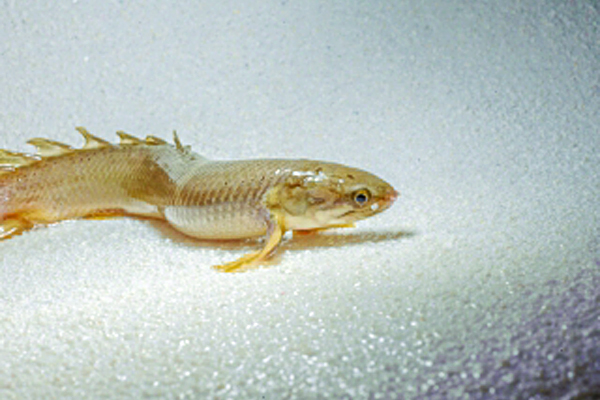U of O physiologist’s experiment could explain missing evolutionary link
photo courtesy of Antoine Morin
A fish available at your local pet store may hold the secret to how water-based vertebrates were able to climb onto land and evolve into the species—including humans—we know today.
Physiologist Emily Standen is a new addition to the University of Ottawa, whose latest evolutionary biomechanical research could explain the missing evolutionary link between fish and walking vertebrates.
The lead author of a recent study published in Nature, Standen worked as a postdoctoral researcher at McGill University alongside professor Hans Larsson and fellow PhD student Trina Du, examining the African bichir fish and determining if it had the ability to survive on land.
Four hundred million years ago, most organisms were living under water. Those creatures who managed to make it to the surface had a big advantage, said Standen. Fossil records suggest that some fish were able to move onto land. However, little is known about the exact physiological adaptations that allowed the move to be permanent.
Standen said the idea for the experiment began because she was “interested in how fish might use their fins in a new environment.”
Bichirs, members of the Polypterus family, resemble the ancient “fossil fish” that stumbled out of the water 400 million years ago. Because of their similarities, the researchers were able to raise them outside of the water, noting any physical and behavioural changes.
“They have similar bodies to these fossil fish,” explained Standen, “We raised them on land and saw how they would change.”
The bichirs were placed in a tank with a thin layer of water spread across the bottom; enough to keep the fish hydrated, but too shallow for them to submerge or swim. Misters along the top of the aquarium prevented their backs from drying out.
After eight months, the researchers compared the bichir fish raised in their normal aquatic environment to those raised in the tank.
They found the “land” fish in the tank had developed enhanced structural support necessary for a terrestrial lifestyle.
“Due to environmentally-based plasticity, their anatomy and behaviour changed to survive. Their fins were planted more firmly on the ground and closer to their midline to reduce friction so they wouldn’t slip when walking,” Standen explained.
“Most fish don’t have necks, due to the water supporting their heads. But they would raise their heads higher off the ground than normal, and bones across their chest got longer and stronger, which gives them more head support and mobility.”
This is an important adaptation for land-based creatures who need the extra mobility to find food.
The researchers were not expecting the drastic changes they found. “We were surprised it survived on land, even with the misters, but it was exciting to see the changes,” said Standen.
This study could give insight on the evolution of land-walking organisms because “all of the changes mirror the fossil record we already have,” she said.
Standen said she is already raising more bichir fish. “I want to continue with the same experiment model and compare muscle changes this time,” she said.
“There’s so much to learn.”





